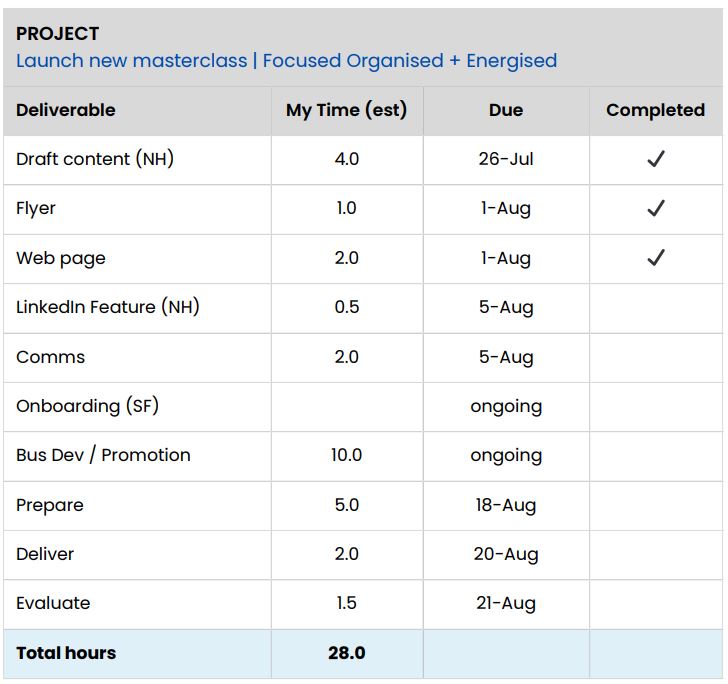Work on fewer things, better.
I’m seeing it everywhere!
Committed managers and leaders are buried under too many active projects. They’re working hard and juggling many priorities. But progress feels painfully slow. And it’s exhausting.
We’re taught to say yes. And for a while, it works. The extra projects and responsibilities help propel our careers. Until they don’t.
Here’s what most people underestimate: Each open project brings three kinds of work. Let’s call them: doing, administering, and holding. We keep taking on more, without fully realising the weight we’re carrying.
The doing is straightforward. It’s the time, energy, and focus it takes to complete the actual tasks.
Administering includes all the emails, coordination, and meetings that keep a project afloat. Even a small project might take an hour a week of this. So, with 10 active projects, you have 10 hours a week spent updating. That’s time going into keeping things alive, not moving them forward.
Then there’s the holding. Open projects don’t just sit on your task list — they also sit in your nervous system. Research shows that open commitments raise stress and anxiety and lower cognitive performance. Even when dormant, they pull at your attention. You carry a constant sense that you’re behind. And when too many are left open, overwhelm kicks in.
Here’s the shift:
Work on fewer things, better.
That means:
• Prioritise ruthlessly
• Pause what can wait
• Close what’s already ‘good enough’
• Say no (or not yet) to requests that steal your focus.
It might feel counterintuitive at first. But you’ll quickly feel clearer. Your team will move faster, and motivation will rise.
Why it works
By limiting the number of projects you’re progressing, you reclaim time, attention and energy. And with less context switching and less to ‘administer’, you’ll finish things faster. This isn’t about minimalism for the sake of it. It’s about choosing your commitments to generate momentum, motivation and results. It’s both strategic and a competitive advantage.
To make it work, set yourself up with 3 lists:
- Daily To-Do List – Includes both your day-to-day responsibilities and tasks from active projects. But keep it short and timeboxed.
- Current Projects List – Your active list of deliverables.
- Future Projects List – Parking space for ‘not yet’ ideas and requests.
Your Current Projects List needs structure and a clear view of where your time is going.
Below is a real example from my Active Project List.
That bottom line, the total estimated hours, is what creates realism. It helps you hold boundaries, communicate capacity, and protect your time.
Go on, list out all your active projects and commitments. Then take a good look at that bottom line. It’s time to get clear on what you’re really carrying.

